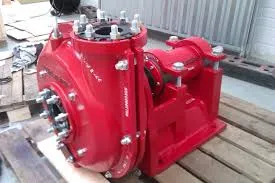Hungarian
- Afrikaans
- Albanian
- Amharic
- Arabic
- Armenian
- Azerbaijani
- Basque
- Belarusian
- Bengali
- Bosnian
- Bulgarian
- Catalan
- Cebuano
- Corsican
- Croatian
- Czech
- Danish
- Dutch
- English
- Esperanto
- Estonian
- Finnish
- French
- Frisian
- Galician
- Georgian
- German
- Greek
- Gujarati
- Haitian Creole
- hausa
- hawaiian
- Hebrew
- Hindi
- Miao
- Hungarian
- Icelandic
- igbo
- Indonesian
- irish
- Italian
- Japanese
- Javanese
- Kannada
- kazakh
- Khmer
- Rwandese
- Korean
- Kurdish
- Kyrgyz
- Lao
- Latin
- Latvian
- Lithuanian
- Luxembourgish
- Macedonian
- Malgashi
- Malay
- Malayalam
- Maltese
- Maori
- Marathi
- Mongolian
- Myanmar
- Nepali
- Norwegian
- Norwegian
- Occitan
- Pashto
- Persian
- Polish
- Portuguese
- Punjabi
- Romanian
- Russian
- Samoan
- Scottish Gaelic
- Serbian
- Sesotho
- Shona
- Sindhi
- Sinhala
- Slovak
- Slovenian
- Somali
- Spanish
- Sundanese
- Swahili
- Swedish
- Tagalog
- Tajik
- Tamil
- Tatar
- Telugu
- Thai
- Turkish
- Turkmen
- Ukrainian
- Urdu
- Uighur
- Uzbek
- Vietnamese
- Welsh
- Bantu
- Yiddish
- Yoruba
- Zulu
Telephone: +86 13120555503
Email: frank@cypump.com
szept . 01, 2024 10:46 Back to list
Ejector System Solutions | Efficient and Reliable Ejector Technology
The Ejector System An Overview
An ejector system is a crucial component in various industrial applications, primarily used for the transportation of fluids and gases. This versatile mechanism leverages the principles of fluid dynamics to create a vacuum effect that draws in other fluids or vapor, making it an efficient solution for several operational needs. Understanding the functionality, design, and applications of ejector systems can illuminate their importance in modern industry.
At its core, an ejector system consists of three main components the motive fluid, the ejector nozzle, and the mixing chamber. The process begins with a high-pressure motive fluid, often steam or compressed air, which is expelled through a nozzle. As the fluid exits the nozzle, it accelerates to create a low-pressure zone in the mixing chamber. The difference in pressure causes surrounding fluids or gases to be drawn into the chamber, where they mix with the motive fluid. The resulting mixture is then expelled through a diffuser, where its pressure is recovered, completing the cycle.
One of the most significant advantages of ejector systems is their ability to efficiently handle low-pressure environments
. They are particularly useful in applications such as venting, vacuum generation, and liquid pumping. Furthermore, ejectors do not have moving parts, which contributes to their reliability and low maintenance costs, making them an economical choice for many industrial operations.ejector system

The applications of ejector systems are diverse. In the chemical industry, they are often used for vacuum distillation processes, aiding in the separation of components based on boiling points. In the wastewater treatment sector, ejectors facilitate the transport of sludge and other byproducts, enhancing system efficiency. Additionally, ejectors are instrumental in the refrigeration sector, where they assist in the removal of non-condensable gases from systems, ensuring optimal performance.
Despite their numerous benefits, ejector systems also face some challenges. The efficiency of an ejector can be affected by factors such as temperature, pressure, and the type of fluids being handled. Engineers must carefully design these systems to match the specific requirements of each application to ensure optimal performance and energy efficiency.
In conclusion, ejector systems represent an innovative and efficient means of fluid transfer in various industries. Their simplicity, reliability, and adaptability make them a preferred choice for many applications. As industries continue to seek more effective and sustainable solutions, the role of ejector systems is likely to expand, underscoring their significance in technological advancement and operational excellence.
-
Horizontal Split Case Pump with GPT-4 Turbo | High Efficiency
NewsAug.01,2025
-
ISG Series Pipeline Pump - Chi Yuan Pumps | High Efficiency, Durable Design
NewsAug.01,2025
-
Advanced Flue Gas Desulfurization Pump with GPT-4 Turbo | Durable & Efficient
NewsJul.31,2025
-
ISG Series Vertical Pipeline Pump - Chi Yuan Pumps | Advanced Hydraulic Design&Durable Construction
NewsJul.31,2025
-
ISG Series Vertical Pipeline Pump - Chi Yuan Pumps | Energy Efficient & Low Noise
NewsJul.31,2025
-
pipeline pump - Chi Yuan Pumps Co., LTD.|High Efficiency&Low Noise
NewsJul.31,2025










